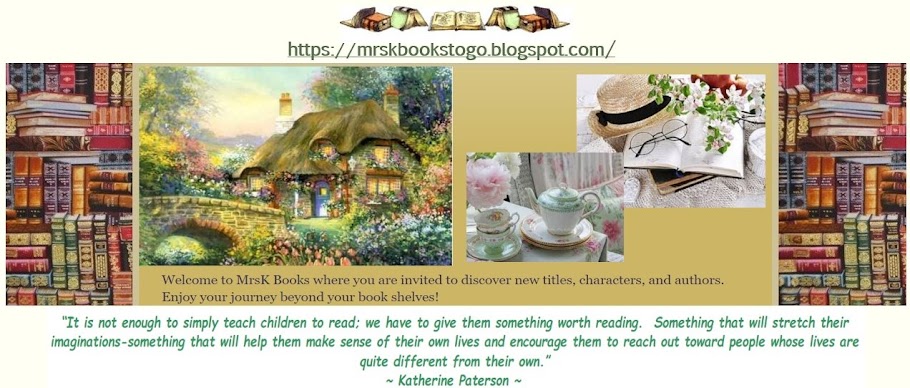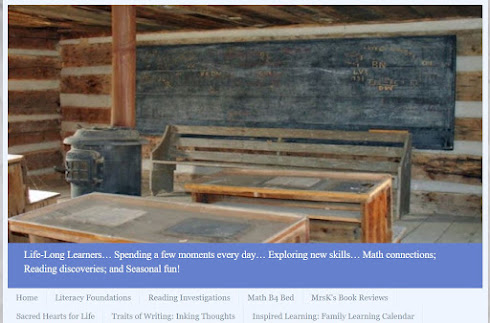Howard Boward
ISBN: 9780310736080
Publisher's Synopsis:
Sometimes, being smart just isn’t enough!
It’s been a rough winter for Howard Boward, science genius. Not only
is he caught in the crossfire of winter’s most dangerous weapon
(snowballs), his best friend, Winnie McKinney, is mad at him, and the
school bullies seem to have made it their personal mission to make life
at Dolley Madison Middle School miserable. But when Howard’s teacher
tells him about the upcoming robot-building contest, Howard can’t resist
using his superior knowledge of science to gain an advantage,
especially since he’ll be competing against archrival Gerald “G-Force”
Forster. Unfortunately, the secret goo he uses to make his cardboard
robot move turns it into a multiplying, vengeance-seeking monster. If
Howard doesn’t stop the robot rebellion in time, they’ll ruin
everything—including his friendships and the school dance.MrsK's Review:
Can you imagine being a science genius? Not even the change of the season is considered easy, normal, or simple. Not every science nerd is a geek, in fact what would our lives be like without them?
"First, before I say anything else, I want to make one thing clear:
some of my best friends are machines. Seriously..."
Meet Howard, a middle school Sci-guy. Earlier on he created a goo that will once again take on a life of it's own design (more about that in a bit). Howard has a big problem, better known as school bullies. These guys are not the type you enjoy seeing coming your way. They even have their own alley of anxiety (Snowball Alley). Beyond the daily onslaught of bullying, Howard also has a nemesis who has just made a rather "good" robot that is able to make hoop shots. G-Force and his Basket-bot could surpass Howard's robotic genius. Although Howard is not an inventor who will be de-throned, he does run into some very mysterious happenings:
"Here it is--the good stuff, the bad stuff, and the stuff I was hoping no one would ever find out about.
It's time the truth came out.
I'll be the first to admit I made a ton of mistakes, and caused a lot of trouble,
and put just about everyone I know in danger....
But just so you know, the robots started it."
As Howard explains the sequence of events, you must acknowledge his passion for making the best robot. His joy when he discovers an after school robot club (BAs). His quick thinking as the Winter Formal is about to be crashed (or smashed) beyond repair. His restraint when he faces the bullies and chooses not to retaliate on their level. And, of course, there is the little "rooting" for Howard when everything he cares about rapidly begins destroying his plans in winning the Believer Achievers Robotics Fair.
The only saving grace is the town's annual Mega-Monster Film Festival. Well, and the help of his Uncle... a few friends... his family... and of course the BAs! Remember that invention of goo? It seems that once you pour it into a box and you add a few ingredients, well it tends to create other self-feeding robots. With the town dressing up for the Mega-Monster Film Festival and the robotic smashers... the town, and the dance, are in extreme danger. How does Howard stop the chaos? That's the hook... I will tell you that dancing sure burns up energy.
This story is an adventure that will provide you with laughter, serious shut-your-eyes bullying, and of course awe-inspiring Sci-guy wowzers...
Enjoy the fun,
MrsK
Too much fun to stay on the shelves!
About the Author: Ron Bates is a novelist and humor columnist who writes about
secret laboratories, monsters, bullies, robots, cafeteria food, and
other perils of middle school. A former newspaper reporter, he is the
author of How to Make Friends and Monsters, How to Survive Middle School
and Monster Bots, the comic book series Brawn, and numerous poems and
plays for kids who like to laugh. He lives in Texas.
Ron Bates is a novelist and humor columnist who writes about
secret laboratories, monsters, bullies, robots, cafeteria food, and
other perils of middle school. A former newspaper reporter, he is the
author of How to Make Friends and Monsters, How to Survive Middle School
and Monster Bots, the comic book series Brawn, and numerous poems and
plays for kids who like to laugh. He lives in Texas.
Don't forget to read the first Howard novel:
What is something about your life right now that you would have never imagined 5 years ago?
That anyone would want my autograph. I still feel like I should apologize whenever I sign a book, it’s this sense that I’ve somehow left a permanent blotch on an otherwise perfect page. Getting to do something like that is an honor and one of the most gratifying parts of the book-writing experience but it’s surreal. I guess it’s because authors aren’t accustomed to being onstage — the book is the star, we’re somewhere back behind the curtain. Don’t get me wrong, it’s wonderful but I always half-expect people to say they’re joking and then pull the book away.
What is one thing you want the next generation to know?
The world neither starts nor ends with you. That sounds so obvious but every generation seems to struggle with the concept. For some reason, there’s this point in our development where we believe we have to change things, and only we can do it because we have all the answers. That’s not the next generation, that’s every generation. The trouble is, we forget that others felt this way long before our arrival. There’s a reason things are as they are, a reason our predecessors set us on this course. That doesn’t mean it’s the right course but it does mean you don’t change everything just for the sake of change. You owe something to the next generation, just as the previous one owed something to you, so don’t throw away the past carelessly. You might be robbing those to come of something precious.
And now a few about How to Make Friends and Monsters!
Where did the idea develop? Are you a big Frankenstein fan?
I grew up a big fan of old monster movies. I’m not just talking about the “classic” monsters like Frankenstein, Dracula and the Wolfman, I liked them all–Mothra, Gamera, the blob, the giant ants from “Them.” One of my favorite memories is staying up late on Friday nights and watching the cheesy midnight movies that always involved some nuclear mutation bent on destroying the planet. But just when you thought you knew everything about monster history, it changed. Sesame Street gave us Cookie Monster and Grover, Harry and the Hendersons gave us a lovable Bigfoot, and we met Sulley and Mike Wazowski from Monsters Inc. Suddenly, monsters, which had always been the scourge of mankind, could be friends.
In a lot of ways, the book is an examination of one question — what is a monster? Is it a monster because of the way it looks, because of where it came from, or because of its actions? At its heart, this is a story about a friendship between two kids, one of whom just happens to be a “monster.”
Were any of the characters inspired by real people?
Definitely. There are elements of people I know in all of them but they’re not exact copies. My brothers and my sister, for example, have all found instances in the book that happened to them while we were growing up. Those parts were when the story felt most “real” to me because they were real experiences. When I picture Winnie McKinney in my head, I know the face I’m thinking of and it belongs to a real-life person. Is Winnie her? The best answer I can give is “kind of.”
As for Howard, he looks at the world a lot like I do. I think he worries about the same things I worried about at his age, so I know I’m in there, part of the mix. Hopefully no one I grew up with will see themselves in the bullies in the story — but if they’d been on the other end of the wedgie back then, there’s a good chance they might.
What’s one of the main things you hope your young readers come away with after reading this?
Fitting in isn’t about becoming who you think the crowd wants you to be. It’s about being who you are and finding your place among people who wouldn’t have you any other way. You might make friends by pretending to be someone you’re not, but you’ll never really be one.
So is there anything on the horizon for Howard?
Indeed there is. I’m finishing the second book in the series right now and it takes place a little later in the year, during the winter months when the first snow has just fallen. We tend to think of snow as this pillowy layer of fluff that floats down from the sky but Howard sees it as something else entirely. Rolled into a ball, it becomes a cold, hard weapon and he is its unfortunate target. Naturally, with his passion for inventing things, you can count on him coming up with a very unusual snowman. It’s not that Howard means for it to be unusual, it’s just that his inventions never quite turn out as planned. But most of the main characters from the first book are back and Howard is still trying to survive the perilous halls of Dolley Madison Middle School, so hopefully it’ll be a fun read.
"I received this book for free for this review"




No comments:
Post a Comment